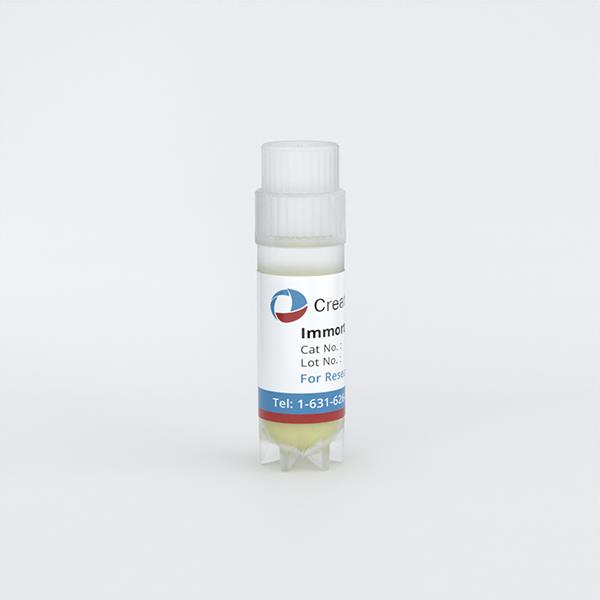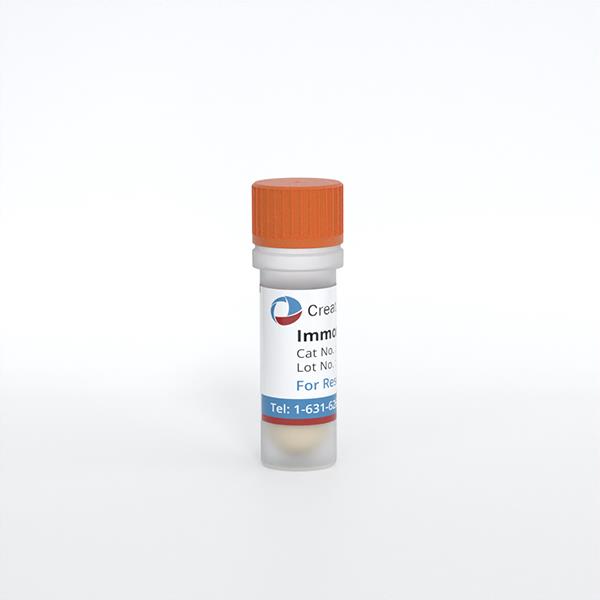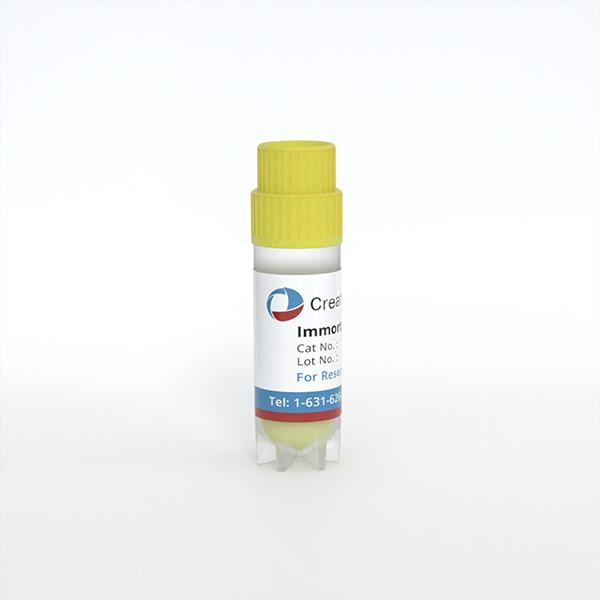
Immortalized Mouse Urogenital Sinus Mesenchymal Cells (UGSM-2)
Cat.No.: CSC-I9252L
Species: Mus musculus
Source: Prostate
Morphology: Spindle-shape fibroblast-like
Culture Properties: Adherent
- Specification
- Q & A
- Customer Review
Cat.No.
CSC-I9252L
Description
The Immortalized Mouse Urogenital Sinus Mesenchymal Cells (UGSM-2) are derived from a subline of the INK4a mouse, a transgenic knockout that lacks p16INK4a and p19ARF, which are specific inhibitors of cyclin-dependent kinases Cdk4 and Cdk6 that regulate cell cycle progression. UGSM-2 cells display a myofibroblast phenotype in culture with vimentin and smooth muscle actin expression, and is shown to respond to androgen stimulation.
Co-culture of UGSM-2 cells with human prostate epithelium cells BPH-1, or co-graftingin vivoresults in organized clusters of BPH-1 cells surrounded by a mantle of the UGSM-2 cells. The cells are responsive to Sonic hedgehog (SHH), an important signaling factor in prostate development, and mimic the transcriptional response of the intact UGS mesenchyme. This cell line is a useful model for studying the prostate stroma-epithelium signalling way, which plays an important role in prostate development and cancer progression.
Co-culture of UGSM-2 cells with human prostate epithelium cells BPH-1, or co-graftingin vivoresults in organized clusters of BPH-1 cells surrounded by a mantle of the UGSM-2 cells. The cells are responsive to Sonic hedgehog (SHH), an important signaling factor in prostate development, and mimic the transcriptional response of the intact UGS mesenchyme. This cell line is a useful model for studying the prostate stroma-epithelium signalling way, which plays an important role in prostate development and cancer progression.
Species
Mus musculus
Source
Prostate
Culture Properties
Adherent
Morphology
Spindle-shape fibroblast-like
Immortalization Method
p16INK4aand p19ARFKnockout
Application
For Research Use Only
Storage
Directly and immediately transfer cells from dry ice to liquid nitrogen upon receiving and keep the cells in liquid nitrogen until cell culture needed for experiments.
Note: Never can cells be kept at -20 °C.
Note: Never can cells be kept at -20 °C.
Shipping
Dry Ice.
Recommended Products
CIK-HT003 HT® Lenti-SV40T Immortalization Kit
Quality Control
Real Time PCR was used to shows activation of SHH target genes
BioSafety Level
II
Citation Guidance
If you use this products in your scientific publication, it should be cited in the publication as: Creative Bioarray cat no.
If your paper has been published, please click here
to submit the PubMed ID of your paper to get a coupon.
Ask a Question
Write your own review
Related Products
Featured Products
- Adipose Tissue-Derived Stem Cells
- Human Neurons
- Mouse Probe
- Whole Chromosome Painting Probes
- Hepatic Cells
- Renal Cells
- In Vitro ADME Kits
- Tissue Microarray
- Tissue Blocks
- Tissue Sections
- FFPE Cell Pellet
- Probe
- Centromere Probes
- Telomere Probes
- Satellite Enumeration Probes
- Subtelomere Specific Probes
- Bacterial Probes
- ISH/FISH Probes
- Exosome Isolation Kit
- Human Adult Stem Cells
- Mouse Stem Cells
- iPSCs
- Mouse Embryonic Stem Cells
- iPSC Differentiation Kits
- Mesenchymal Stem Cells
- Immortalized Human Cells
- Immortalized Murine Cells
- Cell Immortalization Kit
- Adipose Cells
- Cardiac Cells
- Dermal Cells
- Epidermal Cells
- Peripheral Blood Mononuclear Cells
- Umbilical Cord Cells
- Monkey Primary Cells
- Mouse Primary Cells
- Breast Tumor Cells
- Colorectal Tumor Cells
- Esophageal Tumor Cells
- Lung Tumor Cells
- Leukemia/Lymphoma/Myeloma Cells
- Ovarian Tumor Cells
- Pancreatic Tumor Cells
- Mouse Tumor Cells
Hot Products

